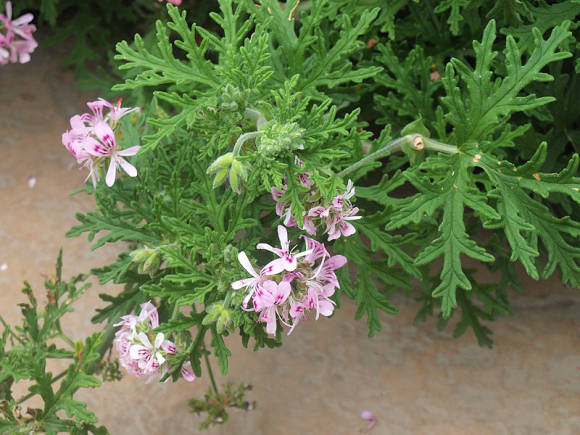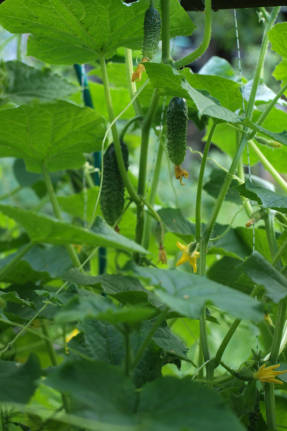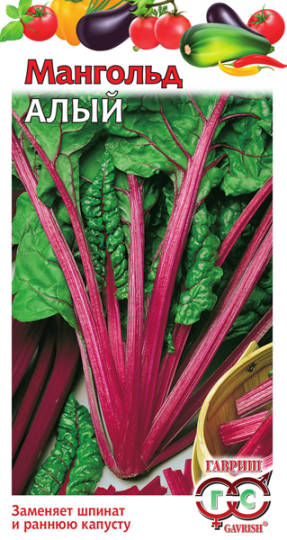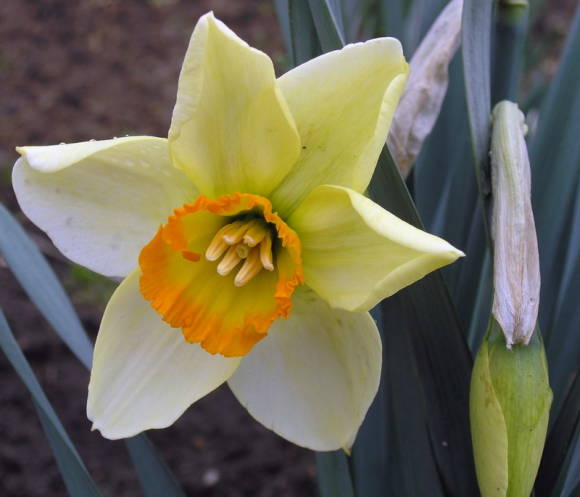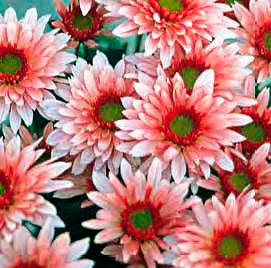
Chrysanthemum is ideal for cutting. Flowers of various colors, beautiful foliage on strong tall stems, long-term preservation of freshness in a vase, high decorativeness, coupled with late flowering - components of the constant and widespread popularity of chrysanthemums in Russia.
Indoor cut chrysanthemum is one of the main flower crops of the autumn-winter period: it blooms from August to December, depending on the variety. It is necessary to start growing it in May.
Today in the world there are several tens of thousands of varieties of garden chrysanthemums. Their classification is rather complicated, but simplistically they can be divided into large-flowered (Indian) with an inflorescence diameter of more than 10 cm and small-flowered (Korean) with an inflorescence diameter of less than 10 cm.
Indian chrysanthemums (Chrysanthemum x indicum L.) all over the world are grown mainly indoors, they are excellent for cutting. Early varieties of Indian chrysanthemums, already in flower pots, can be displayed in the garden.
An important feature of the variety is the flowering period. The early varieties are considered to bloom from August to mid-October, medium - in late October - November, late - in December.
Growing methods
The methods of growing large-flowered chrysanthemum are quite diverse, but in general they all boil down to two main technologies: traditional and controlled culture.
The simplest and most common method among flower growers is to grow early varieties of large-flowered chrysanthemum in crop rotation with other flowers and vegetables in the field. Rooted cuttings are immediately planted in a permanent place in open ground and left in it for flowering and cutting. In case of severe autumn frosts, a plastic wrap is pulled over a temporary portable frame.
Chrysanthemum varieties of middle and late flowering period have a longer growing season, so you can get a high-quality cut only in a greenhouse. Rooted cuttings are immediately planted in a permanent place, and in September the greenhouses are covered with plastic wrap.
You can do otherwise: grow rooted cuttings in the field before the budding phase begins, and then dig up the plants and transplant them into a greenhouse. True, this method is rather laborious.
Growing chrysanthemum using traditional technology, to obtain products in the early stages (August - September), small film greenhouses are used, without winter heating. If you grow it later (October - December), or all year round (controlled crop technology), then it is better to use industrial heated greenhouses.
Planting material
It is usually acquired in the form of rooted cuttings. You can also buy unrooted cuttings and grow them in your greenhouse. The average price of a rooted cuttings is 45 rubles / piece, unrooted - 13-15 rubles; cut-off finished products - 65-80 rubles / piece. for small-flowered and 80-160 rubles. for the large-flowered chrysanthemum.
The main delivery dates for rooted cuttings from foreign producers are early May - mid-July, with the readiness of plants for sale in the autumn.
Traditional technology
Landing

Rooted cuttings are delivered in small peat cups, carefully packed in wet moss and polyethylene (in this form, they can easily be shipped), or in a 104-cell cassette (100 plants are counted).
They are planted in a pot with light, moderately fertile soil or immediately in open ground (they are guided by the delivery time of cuttings) and watered. Rooted cuttings are planted without deepening. Air and substrate temperature - 14 ... 16 ° С.
Rooted cuttings of early varieties of large-flowered chrysanthemum are planted in open ground after May 15. After 10-15 days, medium flowering varieties are planted. For medium-late varieties, the period for planting cuttings in open ground is early June.If you plan to get a cut of chrysanthemum flowers in November - December, then the optimal time for planting rooted cuttings in the greenhouse is mid-July - early August.
Unrooted cuttings are planted in boxes with sand or nutritious soil, well watered. You can also root them in perlite on shelves, the air temperature should be 20 ... 22 ° C, humidity - 80%. The first roots appear on the 7-10th day. Then, after 14-18 days, the rooted cuttings are planted in cassettes or pots.
Multi-stem chrysanthemums are planted in a 20x30 or 30x30 cm pattern (11 plants / m²), and single-stem chrysanthemums in a 15x15 cm pattern (44 plants / m²). The width of the bed is 100-120 cm.
Care, feeding, watering
Large-flowered chrysanthemum is demanding on soil fertility and is very responsive to regular root feeding. In the first period of growth, when there is an active build-up of vegetative mass, the plant is in great need of a large amount of nitrogen and potassium.
The first feeding is carried out 15-20 days after planting, and then every 2 weeks: ammonium nitrate (10-15 g / m²). From the moment the bud appears, the chrysanthemum's need for phosphorus increases. In the open field, 2-3 dressings are given per season, in the greenhouse - up to 4-5, but the concentration of the nutrient solution is reduced at the same time. From the moment the buds are formed and until the very cut, they switch to phosphorus-potassium nutrition.
It is most convenient to work with readily soluble mineral fertilizers, such as crystallin, soluble, calcium nitrate, Kemira-universal, etc.
However, be careful, especially with fertilizing with nitrogen, - its excess in the soil causes burns and blackening of the leaves, and also leads to a decrease in immunity, provokes the appearance and rapid reproduction of aphids on pampered and overfed plants incapable of resistance. Chrysanthemum feeding is carried out simultaneously with watering or immediately after it. All fertilizing is stopped during the period of coloring of the buds!
The first 5-7 days after planting rooted cuttings, plants need daily watering. Then, depending on the weather, the frequency of watering is reduced, moistening the soil less often, but more abundantly. And yet, in hot weather, during the period of intensive growth and formation of leaves, plants have to be watered at least 2-3 times a week.
Growing features
Moderate temperatures are favorable for chrysanthemums. Cuttings root at a temperature not lower than 16 ... 18 ° C, shoot growth begins at 2 ... 6 ° C, and bud formation - at 11 ... 12 ° C. In clear weather, the temperature should not exceed 25 ... 30 ° С, and in cloudy - 25 ° С. Chrysanthemums endure short-term cold snaps (up to -3 ° С), but the buds die already at 0 ° С. Chrysanthemums are short-day plants. In the middle lane, the period when the night is longer than the day lasts from early September to mid-March; chrysanthemums bloom at this time. To grow in height and form leaves, chrysanthemums need a long (14-18 hours) daylight hours. In the middle lane, it begins in April and lasts until the end of August. For the successful cultivation of chrysanthemums, the intensity and spectral composition of light are also important. (During the period of stem growth and leaf formation, the light intensity should be 6.5-8.0 thousand lux, early and middle varieties are especially demanding for this.) These parameters significantly affect the structure of the bush, leaves, inflorescences, roots. Thus, in favorable years in terms of illumination, there are more reed flowers in the inflorescence, and in unfavorable (with strong cloudiness in July - September) the number of tubular flowers increases, i.e. the terry is reduced.
The water requirement of chrysanthemums varies at different stages. Cuttings need high humidity of the substrate and air (90–95%). During intensive growth, when leaves are forming, plants also need more water. In the budding phase, the need for water is reduced by 10–20%. To prolong flowering, chrysanthemums are kept in drier soil than during growth and budding.For successful growth and flowering, large-flowered chrysanthemums need: sunny location, excellent drainage, lack of competition with the roots of other plants, free air circulation, and complete darkness at night (if the latter is not provided, they will not bloom).
Formation of large-flowered chrysanthemum

It is important to be able to form a chrysanthemum bush and choose the best bud from each variety. The productivity of the variety, the number of future peduncles on the bush, as well as the quality and diameter of the flower, depend on the correct and timely implementation of this procedure.
Large-flowered chrysanthemums are usually grown in 1 stem and 3 stems with 1 inflorescence on each of them (but in this case the flower will be smaller).
It is necessary to do the pinching on time, which is mandatory, otherwise the primary bud will give a defective flower. The first - after the rooted cuttings take root in a new place. As soon as the young chrysanthemum releases the 6-8th leaf, the crown is cut off or pinched off, then the plant will release several new shoots. Of these, 2-3 of the strongest are left, and the rest are removed.
Large-colored chrysanthemums are pinched taking into account the flowering of the buds. At the same time, you need to know that in chrysanthemums, each shoot ends with an inflorescence (bud) and in the natural cycle of one growing season there can be up to four orders of shoots and inflorescences.
The term of the last pinching depends on the duration of the period of development of the inflorescences. In all chrysanthemums, the period from pinching the shoot to laying the buds is approximately the same - 30-40 days, and the duration of development of the inflorescence that was laid down at the point of growth before flowering is different for different varieties: in the early - 7-8 weeks, in the middle - 10-12, in the late - 12-14.
Plants periodically stepchild, removing unwanted shoots - and only 1 full-fledged (marketable) inflorescence is formed on each trunk.
Reinforcement mesh
In chrysanthemum, the branching of the bush begins in its lower part. By mid-July, the lateral stems grow quite well - and the plant needs support. It is more profitable to buy a special synthetic flower or vegetable net with a mesh size of about 15 cm, which is pulled over stakes. As the bushes grow, it is easy to raise it higher. With the help of a net, the stems stand upright, very firmly and do not lie down even in bad weather, and the flower heads do not touch each other, and the delicate petals of the flower are not damaged.
Diseases and pests
Chrysanthemums can be affected by downy mildew and gray mold. Against these diseases, spraying with the preparation speed is carried out (2 ml per 10 l of water, solution consumption is 1 l per 10 m²) or topaz (4 ml per 10 l of water, solution consumption is 1 l per 10 m²).
The nematode is especially dangerous for chrysanthemums; a sign of damage is blackening of the lower leaves. Diseased plants are removed and burned. Subsequently, chrysanthemums cannot be planted in this place for several years.
Chrysanthemums are harmed by slugs, aphids, earwigs and miner flies. Scatter granules of the preparation metaldehyde (30 g per 10 m²) against slugs. Spark is used against aphids, moths and earwigs (1 tablet per 10 liters of water, solution consumption 1 liter per 10 m²).
Cutting and storage
Chrysanthemums are cut at the beginning of flowering, when the inflorescences have blossomed well, but the corollas of the peripheral flowers have not yet sagged. Do this early in the morning or late in the evening, or in cloudy weather, because at this time, the plant contains the maximum supply of moisture and nutrients accumulated during the day. For better safety during transportation, the bases of the stems are split and immersed in water (1/2 of the length) for 10-12 hours before being sold. In this case, the lower leaves are removed.
The cut is placed freely in the water. The room should be dry, with good ventilation, flower storage temperature 6 ... 8 ° C. In a cut, chrysanthemum can be stored for 2-3 weeks without changing the quality of the flower.
Magazine "Real owner" № 05 2013

